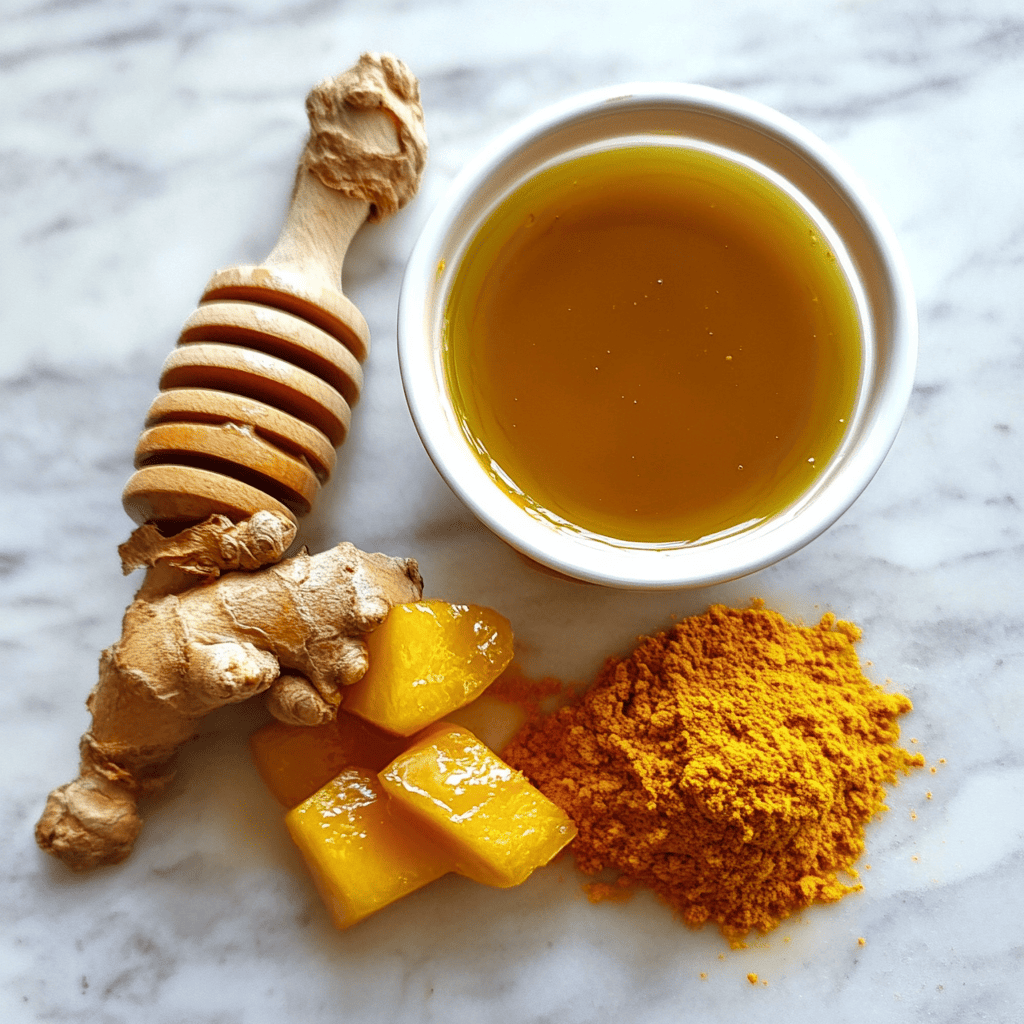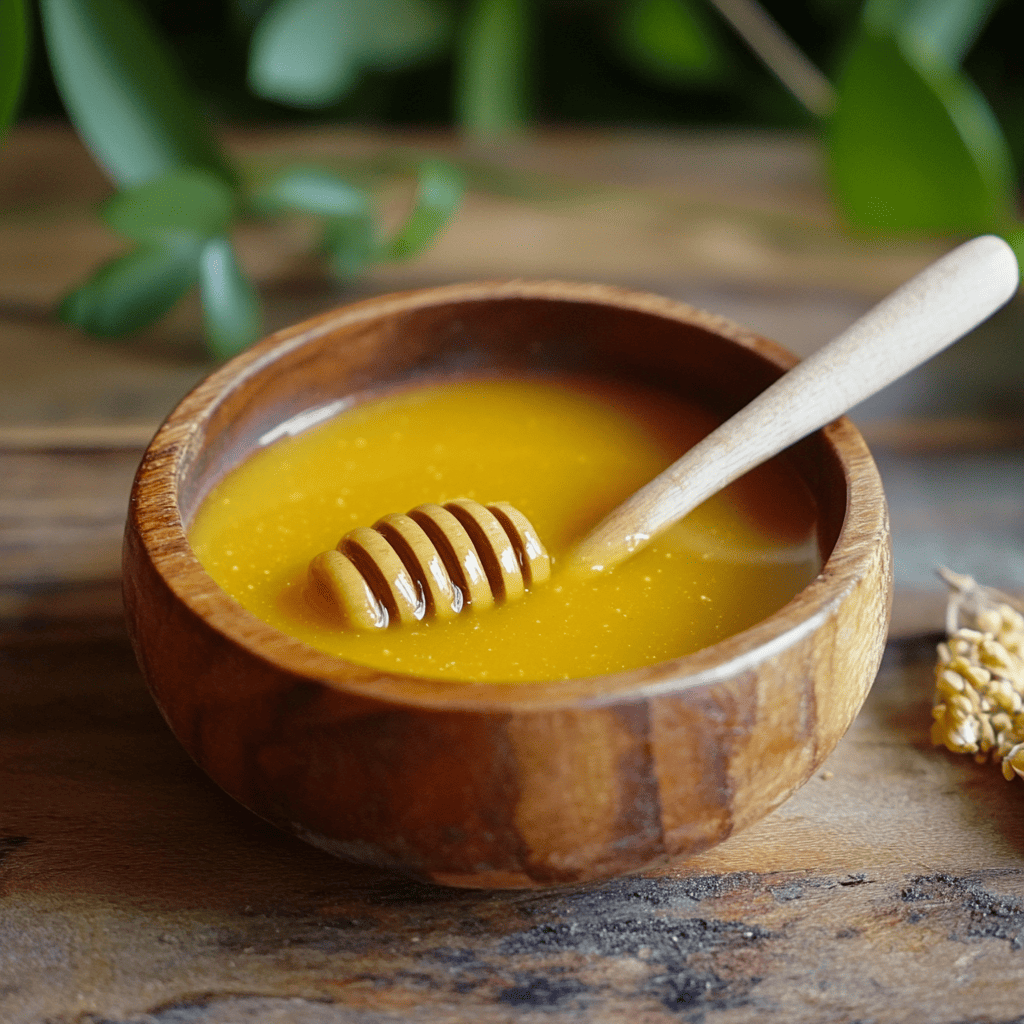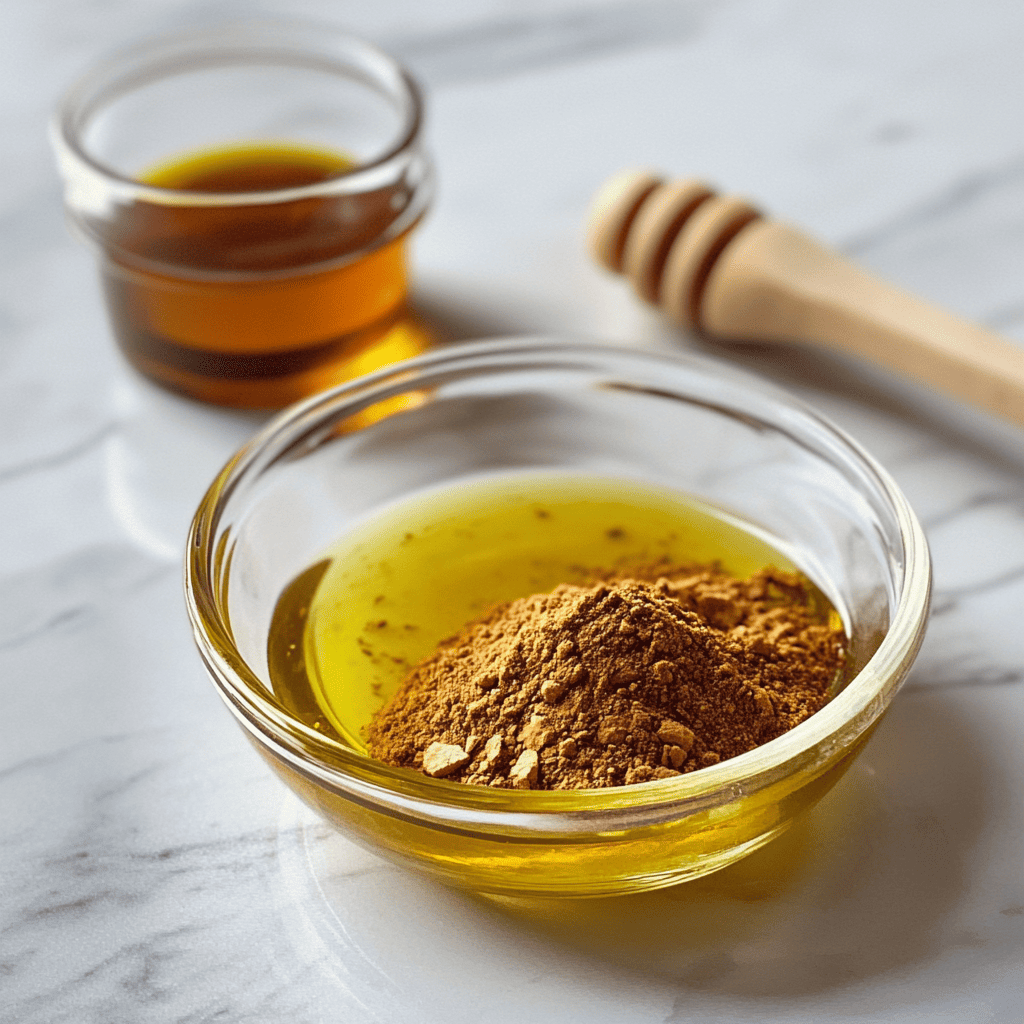Homemade Honey Mustard Vinaigrette: A Versatile and Delicious Dressing
Introduction
Homemade Honey Mustard Vinaigrette is a timeless and classic dressing that instantly elevates the flavor of salads, marinades, and a wide variety of dishes. This simple yet sophisticated emulsion combines the characteristic pungency of mustard with the soft, aromatic sweetness of honey, creating a balance of flavors that delights the palate. The addition of apple cider vinegar provides a refreshing, acidic touch that enhances the complexity of the dressing, while extra virgin olive oil contributes a silky texture and a subtle fruity flavor, in addition to its health benefits. Seasoned with salt and pepper to taste, this homemade vinaigrette allows complete control over the ingredients and the intensity of the flavors, avoiding the additives and preservatives present in many commercial options. Its versatility makes it a must-have in any kitchen, ideal for enhancing fresh salads, marinating meats and poultry, or as a dipping sauce for vegetables and French fries. Preparing it at home is quick, easy, and offers superior flavor and quality. Discover the pleasure of a homemade dressing that will transform your dishes!
A Detailed History of Salad Dressings and the Popularity of Honey Mustard
The practice of dressing salads dates back to ancient times, with evidence of oils and vinegars used to enhance the flavor of green leaves and vegetables. The ancient Egyptians, Greeks, and Romans already used combinations of olive oil, vinegar, and herbs to season their salads. During the Middle Ages and Renaissance, dressings became more elaborate, incorporating spices, mustards, and other ingredients to create more complex flavors.
The combination of honey and mustard as a dressing has a more recent history, but its popularity has spread rapidly thanks to its balance of flavors and versatility. Mustard, used since ancient times for its medicinal and culinary properties, provides a spicy and slightly bitter note that perfectly complements the natural and aromatic sweetness of honey, used as a sweetener since prehistoric times.
The creation of emulsified dressings, where oil and vinegar combine stably, was an important advance in the history of salad dressings. The lecithin present in egg yolk was traditionally used as an emulsifier, giving rise to creamy dressings such as mayonnaise and its derivatives. However, lighter emulsions based on oil and vinegar, such as vinaigrettes, also gained popularity for their freshness and versatility.
Honey mustard vinaigrette likely originated as a variation on classic vinaigrettes, taking advantage of the natural harmony between mustard and honey. Yellow mustard, with its mild, slightly acidic flavor, becomes an ideal base for the rich, floral sweetness of honey. Apple cider vinegar adds a fruity acidity that balances the sweetness and pungency, while olive oil emulsifies the ingredients and provides a silky texture.
The popularity of honey mustard vinaigrette has spread worldwide, becoming a staple dressing in many restaurants and homes. Its versatility makes it suitable for a wide range of salads, from the simplest leafy greens to those elaborated with fruits, nuts, and proteins. It ‘s also used as a marinade for chicken, pork, and fish, providing a sweet and tangy flavor that caramelizes during cooking. It’s also an excellent dipping sauce for raw vegetables, breadsticks, and chips, offering a healthier alternative to creamy dips.
The growing trend toward home cooking and the desire to control ingredients have led to a resurgence of homemade dressing recipes, like this honey mustard vinaigrette. Making it at home is quick, affordable, and allows you to adjust the flavors to your personal preferences, avoiding the additives, preservatives, and added sugars often found in store-bought options.

Detailed Ingredients and Step-by-Step Preparation with Additional Tips
Detailed Ingredients:
- Yellow Mustard: 100 g (approximately 1/2 cup) . Yellow mustard provides the spicy, slightly acidic flavor base of the vinaigrette. Its mild flavor makes it ideal for pairing with the sweetness of honey. Other mustard varieties (Dijon, old-fashioned) can be used for a more intense and complex flavor.
- Honey: 50 g (about 1/4 cup) . Honey adds sweetness, a floral aroma, and a slightly thick texture to the vinaigrette. It’s recommended to use good quality honey, whether flower, acacia, or another type, depending on your taste preference. Raw honey may offer additional health benefits.
- Apple Cider Vinegar: 1 tablespoon (approximately 15 ml) . Apple cider vinegar adds a fruity, acidic note that balances the sweetness of the honey and the pungency of the mustard. Other types of vinegar (white wine, balsamic vinegar) can be used to vary the flavor.
- Extra Virgin Olive Oil: 1 teaspoon (approximately 5 ml) . Olive oil contributes to the vinaigrette’s silky texture and adds a subtle fruity flavor, in addition to its healthy fats. It’s recommended to use a good quality extra virgin olive oil.
- Salt: To taste . Salt enhances the flavors of all ingredients and helps balance sweetness and acidity. Fine salt or sea salt is recommended.
- Ground Black Pepper: To taste . Black pepper adds a spicy, aromatic note that complements the other flavors. Using freshly ground pepper provides a more intense flavor.
Detailed Step-by-Step Preparation:
- Combine Ingredients: In a small bowl or jar with a lid, add the yellow mustard, honey, apple cider vinegar, and extra virgin olive oil.
- Mix Well: Use a small whisk or spoon to mix the ingredients until you get a smooth emulsion. If using a jar, close the lid tightly and shake vigorously until the vinaigrette is well combined and has a slightly thickened texture.
- Season: Add salt and black pepper to taste. Taste the vinaigrette and adjust the seasoning according to your personal preferences. You can add more honey for a sweeter flavor or more vinegar for a more tangy touch.
- Storage (Optional): If you’re not using the vinaigrette immediately, pour it into a clean, covered jar and store it in the refrigerator. Homemade honey mustard vinaigrette can be stored in the refrigerator for about a week. The ingredients may separate slightly when refrigerated, so shake or stir well before using.
Additional Tips:
- Vary the Mustard: Experiment with different types of mustard to achieve unique flavor profiles. Dijon mustard will provide a more complex, spicy flavor, while old-fashioned mustard with seeds will add texture and a more rustic flavor.
- Customize the Honey: Use different types of honey to vary the sweetness and aroma of the vinaigrette. Orange blossom honey has a citrusy flavor, while avocado honey is darker and has a more intense flavor.
- Add Herbs and Spices: Add chopped fresh herbs (parsley, chives, dill) or spices (garlic powder, onion powder, paprika) to give your vinaigrette an extra touch of flavor and aroma.
- A Creamy Touch: For a creamier vinaigrette, you can add a teaspoon of mayonnaise or natural yogurt to the mixture.
- Stable Emulsion: To achieve a more stable emulsion and prevent the ingredients from separating easily, you can add a small amount of soy lecithin or a pinch of xanthan gum to the mixture while whisking.
- Flavor Infusion: For a vinaigrette with a deeper flavor, you can infuse the vinegar with fresh herbs or spices for a few days before using it.
- Adjust the consistency: If you prefer a thinner vinaigrette, you can add a little more vinegar or water. If you prefer a thicker vinaigrette, add a little more honey or oil, whisking well.

Frequently Asked Questions and Estimated Preparation Time
- Can I make a vegan version? Yes, just omit the honey and use a vegan sweetener like maple syrup or agave.
- How long does this vinaigrette last in the refrigerator? About a week, stored in an airtight jar.
- Can I use another type of oil instead of olive oil? Yes, you can use avocado oil, sunflower oil, or any other good-quality vegetable oil.
- Can this vinaigrette be frozen? Freezing oil- and vinegar-based vinaigrettes is not recommended, as the texture may be affected when thawed.
- How can I intensify the flavor of mustard? Use a stronger variety like Dijon or add a pinch of mustard powder to the mix.
- What other ingredients can I add to give it a different touch? You can try a little lemon or orange juice for a citrusy note, or a little Worcestershire sauce for an umami flavor.
Estimated Preparation Time:
- Ingredients Preparation: 2 minutes
- Mix: 3 minutes
Estimated Total Time: 5 minutes
Texture and Flavor
The texture of this homemade honey mustard vinaigrette is silky and slightly thick thanks to the emulsion of the oil and vinegar, enhanced by the natural viscosity of the honey. When shaken or blended, it becomes smooth and evenly coats the salad ingredients.
The flavor is a delicious combination of the characteristic, slightly acidic pungency of yellow mustard with the gentle, aromatic sweetness of honey . The refreshing, acidic touch of apple cider vinegar balances the sweetness and pungency, creating a harmony of flavors that stimulates the palate. The subtle fruity flavor of extra virgin olive oil adds a layer of complexity and smoothness to the dressing. Salt and pepper enhance all the flavors, creating a vibrant and delicious dressing.
Consumer Context
Homemade honey mustard vinaigrette is extremely versatile and adapts to a wide variety of dishes:
- Salads: It is the perfect dressing for green leaf salads, chicken salads, pasta salads, potato salads, and salads with fruits and nuts.
- Marinades: Use it to marinate chicken, pork, fish, and tofu before grilling, baking, or frying .
- Dipping Sauce
- Raw Vegetables: Carrots, celery, peppers, and cucumbers cut into sticks.
- French Fries: Homemade or store-bought.
- Breadsticks: Whole wheat or white.
- Chicken Nuggets: Homemade or store-bought.
Visual Aspect
Homemade honey mustard vinaigrette has a bright golden yellow color with possible dark spots from ground black pepper and, if used, mustard seeds in varieties like old-fashioned mustard. Its texture is smooth and slightly viscous , coating the salad ingredients with an appetizing sheen. In a jar, its uniform color is appreciated, with the possibility of seeing small particles of spices or herbs if they have been added.
Curiosities
- Homemade Emulsion: The key to a good vinaigrette is to achieve a stable emulsion where the oil and vinegar combine without quickly separating. Honey helps stabilize this emulsion thanks to its viscosity.
- Cultural Variations: Although the combination of honey and mustard is popular in many Western cuisines, similar dressings using local ingredients exist in other cultures that strive for a balance between sweet and spicy.
- Ingredient Benefits: Honey is known for its antibacterial and antioxidant properties, olive oil for its healthy fats, and mustard for its beneficial compounds.
- Versatile Dressing: Its ability to complement both sweet and savory dishes makes it a kitchen staple.
- Quick Preparation: Making your own vinaigrette at home is much faster than you imagine and allows you to control the quality of the ingredients.
Nutritional Value (Estimated per Serving – 2 tablespoons)
- Calories: 70-90 kcal
- Protein: <1 g
- Fats: 6-8 g (mainly healthy fats from olive oil)
- Carbohydrates: 5-7 g (mainly natural sugars from honey)
- Fiber: <1 g
- Sodium: Variable depending on the amount of salt used.
Additional Benefits and Interesting Facts
- No Artificial Additives: By making your own vinaigrette, you avoid the preservatives, emulsifiers, and added sugars often found in commercial options.
- Ingredient Control: You can choose high-quality ingredients and adjust the quantities according to your dietary preferences (for example, use more olive oil and less honey for a lower-sugar option).
- Fresh and Personalized Flavor: Homemade vinaigrette has a much fresher and more vibrant flavor than pre-made options, and you can customize it to your personal tastes.
- Budget-Friendly Option: Making your own dressing is often more economical in the long run than buying it regularly.
- Ideal for Gift Giving: A homemade vinaigrette in a pretty jar can be an original and appreciated gift.

Conclusion
In conclusion, homemade honey mustard vinaigrette is much more than a simple dressing; it’s a versatile and healthy burst of flavor that can transform your everyday dishes into memorable culinary experiences. Its perfect balance of the pungency of mustard and the sweetness of honey , enhanced by the acidity of apple cider vinegar and the smoothness of olive oil, makes it a must-have in any kitchen .
We’ve explored its rich history , its simple preparation , and its wide range of uses , from enhancing fresh salads to marinating meats and serving as a delicious dipping sauce. Its visual appeal and nutritional benefits , with the absence of artificial additives and the ability to control ingredients, make it a superior choice to commercial alternatives.

